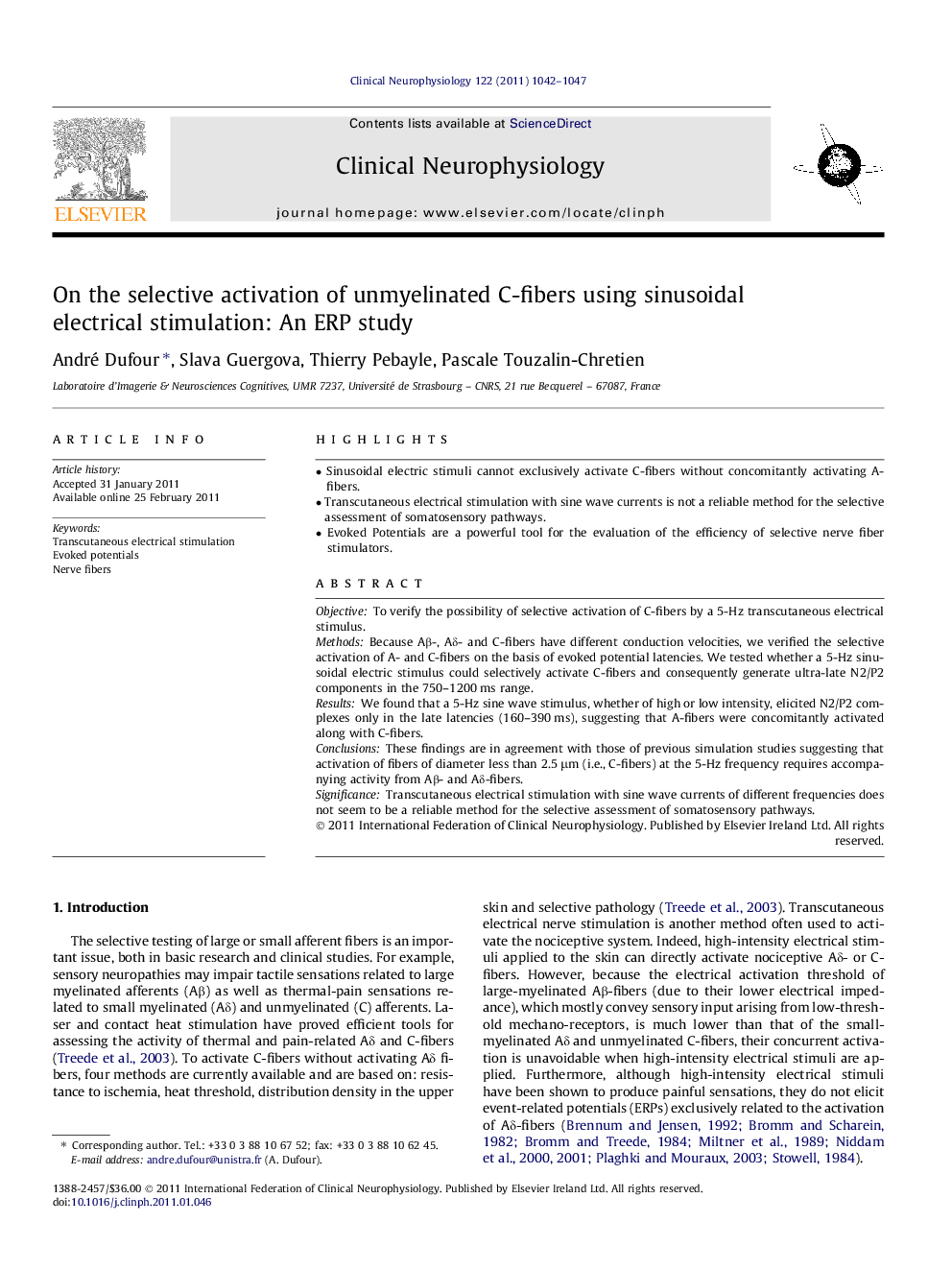| Article ID | Journal | Published Year | Pages | File Type |
|---|---|---|---|---|
| 3044485 | Clinical Neurophysiology | 2011 | 6 Pages |
ObjectiveTo verify the possibility of selective activation of C-fibers by a 5-Hz transcutaneous electrical stimulus.MethodsBecause Aβ-, Aδ- and C-fibers have different conduction velocities, we verified the selective activation of A- and C-fibers on the basis of evoked potential latencies. We tested whether a 5-Hz sinusoidal electric stimulus could selectively activate C-fibers and consequently generate ultra-late N2/P2 components in the 750–1200 ms range.ResultsWe found that a 5-Hz sine wave stimulus, whether of high or low intensity, elicited N2/P2 complexes only in the late latencies (160–390 ms), suggesting that A-fibers were concomitantly activated along with C-fibers.ConclusionsThese findings are in agreement with those of previous simulation studies suggesting that activation of fibers of diameter less than 2.5 μm (i.e., C-fibers) at the 5-Hz frequency requires accompanying activity from Aβ- and Aδ-fibers.SignificanceTranscutaneous electrical stimulation with sine wave currents of different frequencies does not seem to be a reliable method for the selective assessment of somatosensory pathways.
► Sinusoidal electric stimuli cannot exclusively activate C-fibers without concomitantly activating A-fibers. ► Transcutaneous electrical stimulation with sine wave currents is not a reliable method for the selective assessment of somatosensory pathways. ► Evoked Potentials are a powerful tool for the evaluation of the efficiency of selective nerve fiber stimulators.
